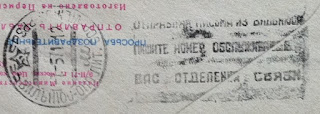I had few people asking about registered letters coming from Lithuania. Many people think international registered mails from Lithuania are untrackable unlike EMS. That is not entirely true. They are some countries where you can actually track registered mails on Lithuanian Post's official website. However, not every country has an agreement of mutual online information exchange (except EMS) which makes some country impossible to track once it goes out of Lithuania.

This is a tracking result of a registered letter sent from the post office - postal code 78014 (Šiauliai) on 15/10/2012 to Tokyo, Japan. You can see that on the 17/10, it is leaving from the international forwarding post office in Vilnius and then... just disappear. According to the Lithuanian Post office website mail tracking system, this mail has never been delivered. Lithuanian Post does not have agreement of sharing information with Japanese post so no matter how long you will wait, it will never appear. I guess this is what happened to lot of people and started to wonder if it got lost or something. Well, have you ever notice that until 4, 5 years ago, registration labels had the post office name and number on it? Now it has been all replaced by barcodes. Those barcodes are actually revolutional, because it allowed to digitally record the registration number of the country of origin. What does it mean? It means that you can just go to the website of the Post of the destination country and enter the Lithuanian registered number you have enter in Lithuanian Post website!

Going to the Japanese Post website... and Voilà! Now you have the missing part after 17/10, I happily got the mail on 20/10, exactly 5 days after it has been posted in Šiauliai. You will be surprised in how many countries this would work. They are some countries like Germany where they hand out part of the mails to some private delivering companies. I have discovered that in such case, you can't track the mails unfortunately.





























































